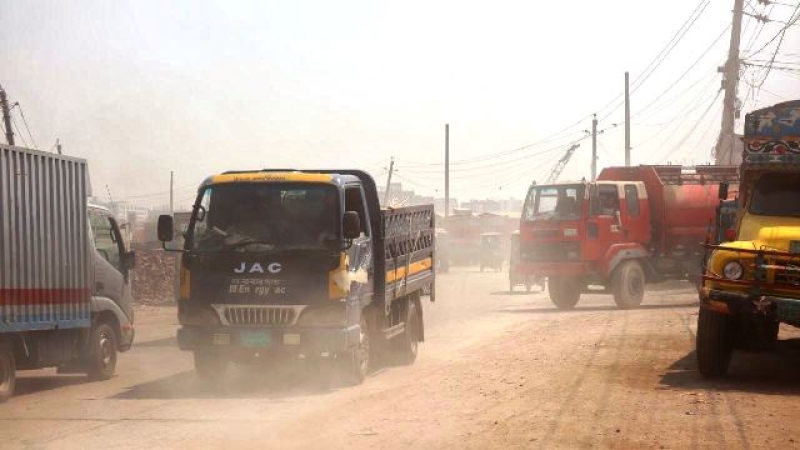- China visit a ‘major success’ for interim government: Fakhrul |
- NYT paints troubling, one-sided view of Bangladesh |
- Two brothers killed in Narsingdi over extortion refusal |
- Death toll from Myanmar earthquake surpasses 1,700 |
- Children’s entertainment centres buzz with Eid crowds |
Dhaka’s air turns ‘unhealthy’ Friday morning

Air pollution in Dhaka on Friday morning
Dhaka, March 28 (UNB)-Dhaka, the overcrowded capital city of Bangladesh, has ranked fifth on the list of cities with the worst air quality with an AQI score of 174 at 9:25am this morning (March 28, 2025).
Today’s air was classified as ‘unhealthy,’ referring to a severe health threat to residents, according to the AQI index.
When the AQI value for particle pollution is between 50 and 100, air quality is considered ‘moderate’, usually sensitive individuals should consider limiting prolonged outdoor exertion, between 101 and 150, air quality is considered ‘unhealthy for sensitive groups’, between 150 and 200 is ‘unhealthy’, between 201 and 300 is said to be 'very unhealthy', while a reading of 301+ is considered 'hazardous', posing serious health risks to residents.
Nepal’s Kathmandu, Iraq’s Bagdad and Egypt’s Cairo cities respectively occupied the first, second, and third spots on the list, with AQI scores of 217, 210 and 202 respectively.
The AQI, an index for reporting daily air quality, informs people how clean or polluted the air of a certain city is and what associated health effects might be a concern for them.
The AQI in Bangladesh is based on five pollutants: particulate matter (PM10 and PM2.5), NO2, CO, SO2, and ozone.
Dhaka has long been grappling with air pollution issues. Its air quality usually turns unhealthy in winter and improves during the monsoon.
As per World Health Organization (WHO), air pollution kills an estimated seven million people worldwide every year, mainly due to increased mortality from stroke, heart disease, chronic obstructive pulmonary disease, lung cancer, and acute respiratory infections. - UNB

